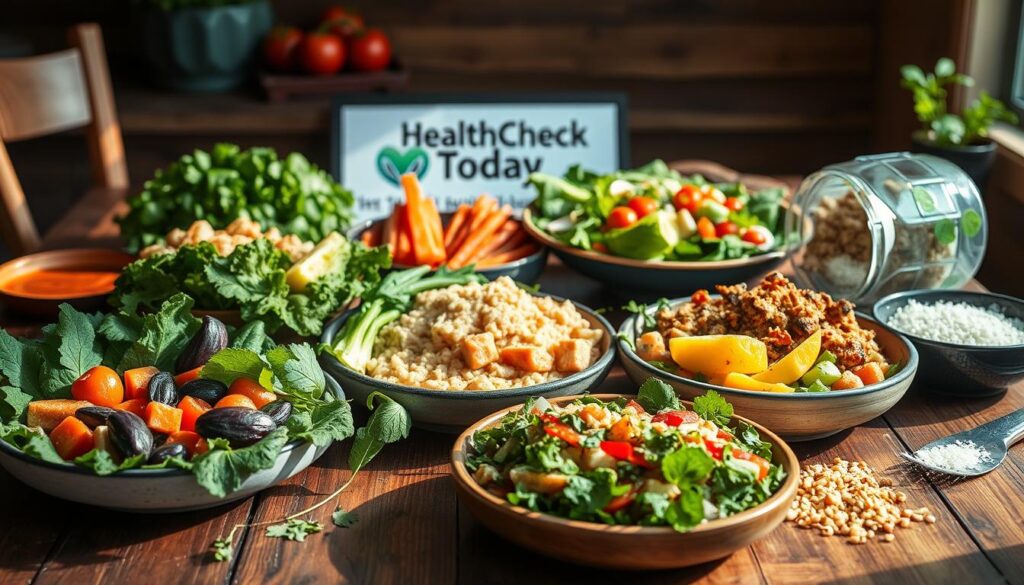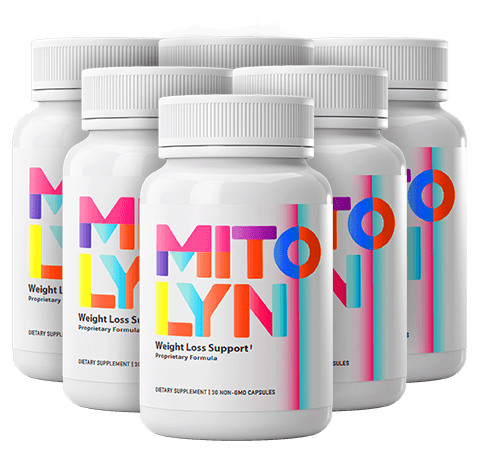
Imagine you’ve been told you have Hashimoto’s thyroiditis. Your body feels tired, your brain is foggy, and your energy goes up and down. You’re not alone. Most cases are caused by genes, but what you eat can help.
The right diet for Hashimoto’s is more than just managing symptoms. It’s about taking back your life.
Millions of Americans live with this autoimmune disease. Simple changes, like eating less processed food, can help a lot. Think of your kitchen full of foods like salmon, Brazil nuts, and leafy greens. These foods are good for you because they’re full of vitamins and minerals.
Research shows most people with Hashimoto’s have low vitamin D. Selenium is also important for the thyroid. But, what works for one person might not work for another. Your journey to better health starts here, with steps tailored just for you.
Key Takeaways
- Genetics play a major role (70–80%), but diet addresses 20–30% of environmental factors.
- Anti-inflammatory foods like fruits, beans, and whole grains reduce thyroid inflammation.
- Vitamin D and selenium (in foods like tuna and Brazil nuts) are critical for thyroid function.
- Individualized plans work best—75% of those avoiding gluten saw fewer symptoms.
- Avoid goitrogenic veggies like raw kale in excess, but cooked forms are safer.
Understanding Hashimoto’s Disease and Its Relationship With Diet
Hashimoto’s thyroiditis is a common cause of hypothyroidism in the U.S. It happens when your immune system attacks your thyroid gland. This attack damages thyroid cells, which reduces hormone production over time.
While medicine helps control hormone levels, diet is key in managing symptoms and slowing disease. The hashimoto’s disease diet is important for this.
How Hashimoto’s Affects Your Thyroid Function
Thyroid hormones control your metabolism. But Hashimoto’s disrupts this process. White blood cells attack your thyroid, causing inflammation and hormone decline.
Over time, this leads to symptoms like fatigue and weight gain. Regular TSH blood tests check thyroid function. But symptoms can still exist even with normal lab results.
The Autoimmune Connection: Why Diet Matters
A hashimotos thyroiditis diet aims to calm inflammation and support gut health. This is crucial for managing autoimmune diseases. Foods like processed sugars, alcohol, and gluten can make immune activity worse.
Studies show that avoiding gluten can lower thyroid antibodies. The Autoimmune Protocol (AIP) diet also reduced inflammation in a 2019 trial.
“The AIP diet significantly reduced inflammation in 78% of participants with Hashimoto’s,”
the study noted.
Common Symptoms That Proper Nutrition Can Help Address
Key symptoms like brain fog, hair loss, and digestive issues can improve with the right nutrition. A diet rich in selenium (found in Brazil nuts) and vitamin D helps repair cells. Here are some strategies for each symptom:
| Symptom | Nutrient Focus | Food Example |
|---|---|---|
| Fatigue | B vitamins | Salmon, eggs |
| Weight gain | Fiber-rich foods | Chia seeds, broccoli |
| Low mood | Omega-3s | Walnuts, flaxseeds |
Be consistent with dietary changes. They may take months to show results. Work with a healthcare provider to create a personalized hashimoto’s disease diet. Monitor lab values and symptoms together.
The Fundamental Principles of a Hashimoto’s Disease Diet
Creating a hashimotos diet plan involves four key principles. These help lower inflammation, support the thyroid, and meet personal needs. Let’s explore what science and experience show is effective:

- Anti-Inflammatory Focus: Choose best foods for hashimotos like leafy greens, wild-caught fish, and olive oil. These foods combat chronic inflammation linked to thyroid issues.
- Nutrient Density: Include selenium-rich Brazil nuts, zinc-packed pumpkin seeds, and vitamin D-rich salmon. These nutrients boost thyroid hormone production and immune health.
- Trigger Food Awareness: Some people find relief by avoiding gluten, dairy, or refined sugars. Keep track of how your body reacts to these common culprits.
- Personalization: There’s no one-size-fits-all diet. Work with a healthcare provider to customize your plan, especially if you face digestive problems or fatigue.
A 2024 study showed the Mediterranean diet’s benefits. It lowers anti-thyroid antibodies and improves TSH levels. It focuses on whole foods like lentils, avocados, and nuts. Here’s how key nutrients help your body:
| Nutrient | Best Sources | Why It Matters |
|---|---|---|
| Selenium | Brazil nuts, sardines | Aids thyroid hormone conversion |
| Zinc | Pumpkin seeds, chickpeas | Supports immune regulation |
| Omega-3s | Flaxseeds, walnuts | Reduce autoimmune flare-ups |
Consistency is key, not perfection. Small changes like choosing berries over processed snacks or olive oil over butter can help. Listen to your body’s signals and adjust your hashimotos diet plan as needed.
Anti-Inflammatory Foods That Support Thyroid Health

Nutrient-rich foods are crucial for managing hashimotos disease. They help reduce inflammation and support thyroid health. Here’s how to create a hashimotos disease diet with science-backed foods:
Omega
Omega-3 Rich Options for Reducing Inflammation
- Wild-caught salmon or sardines (3-4 oz servings twice weekly)
- Ground flaxseeds (1 tbsp daily in smoothies or yogurt)
- Walnuts as a snack instead of processed chips
These foods help balance omega-6 to omega-3 ratios. A study shows they curb inflammation.
Foods to Limit or Avoid When Managing Hashimoto’s

When you follow the hashimotos disease diet, you avoid foods that cause inflammation. These foods can make symptoms worse. Here’s what to avoid:
Potential Trigger Foods That May Worsen Symptoms
Some foods can make inflammation worse or trigger autoimmune responses. Common ones include:
- Gluten: It can make symptoms worse in 10x more Hashimoto’s patients with celiac disease.
- Added sugars: Found in candy, soda, and baked goods, these boost inflammation.
- Processed oils: Vegetable oils like soybean or canola may increase inflammation.
- Dairy: 76% of patients experience lactose intolerance; consider alternatives like almond or oat milk.
“A study showed women on a gluten-free diet saw better thyroid function and higher vitamin D levels.”
The Truth About Goitrogens and Your Thyroid
Cruciferous veggies like broccoli or kale are good but have goitrogens. These can affect thyroid function only in large raw amounts. Cooking them reduces the impact:
- Raw cruciferous veggies: Steam or roast them to neutralize goitrogens.
- Cassava and soy: Limit raw soy and cassava in large quantities.
Hidden Sources of Inflammatory Ingredients
| Ingredient | Common Sources |
|---|---|
| Added sugars | Sauces, cereals, energy bars |
| Trans fats | Packaged snacks, fried foods |
| Artificial additives | Processed meats, pre-made meals |
Look for “partially hydrogenated oils” and hidden sugars like dextrose or maltose on labels.
Small changes, like swapping sugary drinks for herbal tea or choosing olive oil over margarine, align with the hashimotos flare up diet goals. Always talk to your healthcare provider to tailor your approach.
The Hashimoto’s Gluten-Free Diet: Is It Right for You?
Many people with Hashimoto’s thyroiditis try a gluten-free diet to feel better. Even though studies don’t prove it works for everyone, 75% of those with Hashimoto’s give it a shot. They think gluten might confuse their immune system and cause thyroid inflammation.

A small study showed women on gluten-free diets had lower thyroid antibodies. But results can vary. Your body might react differently. If you’re curious, try going gluten-free for 30 days.
Watch how you feel, like your energy and mood. If you notice improvements, keep going. But if not, slowly add gluten back into your diet.
- First, get tested for celiac disease. Blood tests can tell if you need to avoid gluten strictly.
- Eat whole foods like quinoa, rice, and veggies instead of processed gluten-free snacks.
- See a dietitian to make sure you’re getting all the nutrients you need, like fiber and B vitamins.
Scientists are still unsure if gluten directly harms the thyroid. Some think gluten’s proteins might look like thyroid cells, causing autoimmune attacks. But most studies are small. Always talk to your doctor before changing your diet.
What works for one person might not work for another. Listen to your body and focus on eating well. A gluten-free diet might help some people, but it’s not a fix-all solution. Always check your thyroid hormone levels and see your doctor regularly.
Meal Planning Strategies for Your Hashimoto’s Diet Plan
Starting a hashimotos diet plan is key to better thyroid health and weight loss. Eat foods high in selenium, vitamin D, and fiber. These foods fuel your body well. Cooking in batches and snacking smartly helps you stay on track.

- Try chia seed pudding with almond milk, topped with berries (rich in antioxidants).
- Avocado toast on gluten-free whole-grain bread paired with a poached egg (vitamin D).
- Smoothies with spinach, banana, and a scoop of pea protein powder for balanced energy.
Cook once, eat twice: Make a big batch of:
- Salmon Quinoa Bowl: Grilled salmon (selenium), omega-3s) + roasted sweet potatoes and steamed broccoli (cook to reduce goitrogens).
- Lentil Curry: Simmer lentils with turmeric, ginger, and coconut milk for anti-inflammatory benefits.
Store leftovers to make weekday meals easier. Choose fresh foods over processed ones.
Snack on foods that keep your blood sugar stable and support your hashimotos weight loss diet:
- Hard-boiled eggs and carrot sticks (protein + fiber).
- Trail mix with walnuts and dark chocolate chips (magnesium and zinc).
- Edamame beans (high in plant-based protein and easy to prep).
Drink herbal teas or infused water. Try lemon and cucumber slices for a refreshing drink.
Hashimoto’s Diet and Exercise: Finding the Right Balance

Mixing the hashimotos diet and exercise is key to managing symptoms. Gentle exercises with a healthy diet, like the hashimotos weight loss diet, boost energy and cut down on inflammation. This way, you avoid getting too tired.
Low-intensity activity like yoga or walking improves mood by 20-30%, easing stress linked to thyroid imbalance.
Low-Impact Workouts That Complement Your Dietary Efforts
Choose activities that match your energy. Try:
- Yoga: It makes you more flexible and lowers cortisol, a stress hormone that makes Hashimoto’s symptoms worse.
- Swimming: It builds muscle without hurting your joints, perfect for those with stiffness.
- Walking: Walking for 30 minutes, five days a week, helps your metabolism without stressing your thyroid too much.
Avoid intense workouts like CrossFit, as they can be too hard on your immune system. If you get really tired, slow down.
Timing Your Nutrition Around Physical Activity
Have a small snack 30-60 minutes before you exercise. Try banana with almond butter or Greek yogurt for energy. After working out, eat protein and complex carbs within 30 minutes to help you recover. Don’t eat big meals before exercising to avoid stomach problems.
Combine these habits with the hashimotos weight loss diet for steady progress. Take your thyroid meds on an empty stomach, at least 30 minutes before meals, to help them absorb better.
A 2016 study found that a low-carb diet without goitrogenic foods helped lower antibodies and promote weight loss. Focus on whole foods and staying hydrated to power your workouts.
Managing Hashimoto’s Flare-Ups Through Dietary Adjustments
When you feel tired, have joint pain, or feel foggy, small diet changes can help. Add foods like wild-caught salmon, leafy greens, and turmeric. These foods help calm your immune system.

At times, you might need to follow a stricter diet like the hashimotos paleo diet. This diet removes grains, legumes, and dairy to reduce digestive stress. Drinking 2L of water daily also helps flush toxins and keep you hydrated.
- Step 1: Increase omega-3s from flaxseeds or walnuts to lower inflammation.
- Step 2: Eat protein-rich meals every 3-4 hours. Aiming for 0.5g protein per pound of body weight helps stabilize energy.
- Step 3: Add 1-2 weekly servings of beets with avocado or olive oil to balance their natural sugars.
“Stress management is as critical as diet. Even 10 minutes of deep breathing daily can lower cortisol and ease symptoms.”
If symptoms don’t get better, talk to your doctor. Flare-ups might mean you need more nutrients. Getting 7-9 hours of sleep is also important for healing. Eating Brazil nuts (2-3 daily) can help your thyroid.
Avoid processed carbs and eat small portions of berries to keep your blood sugar stable. Remember, 50% of people with Hashimoto’s get better by managing blood sugar. Small, consistent changes can make a big difference. Work with your care team to make these changes fit your needs.
Conclusion: Creating Your Sustainable Hashimoto’s Eating Plan
A study with 180 participants showed a big difference with a tailored diet. Those on a structured plan saw thyroid antibodies drop by up to 57%. Your diet plan must fit your unique needs.
Start by looking into the hashimotos paleo diet, which focuses on whole foods. You can also mix strategies from autoimmune protocols. Up to 88% of people with Hashimoto’s are gluten sensitive, so avoiding gluten or dairy is important.
Work with a healthcare provider to track your symptoms and adjust your plan. The study diet had 12-15% carbs, proving low-carb myths wrong. Add thyroid-friendly nutrients like selenium-rich Brazil nuts or iodine from seafood.
Remember, 83% of those with Hashimoto’s have lactase issues. So, watch how foods affect your energy and weight.
Make your routine flexible. The study’s 3-week trial showed progress, but long-term success needs ongoing tweaks. Use food journals to spot patterns.
Focus on anti-inflammatory meals but allow for social event adjustments. A registered dietitian can help balance iodine intake, following EFSA guidelines.
Start with thyroid-friendly snacks and gradually add more to your plan. Pair meals with low-impact exercise like yoga to support metabolism. Over time, your personalized approach will help manage symptoms and energy levels.
By combining science-backed strategies with professional guidance, you’re taking a proactive step toward sustainable wellness.















